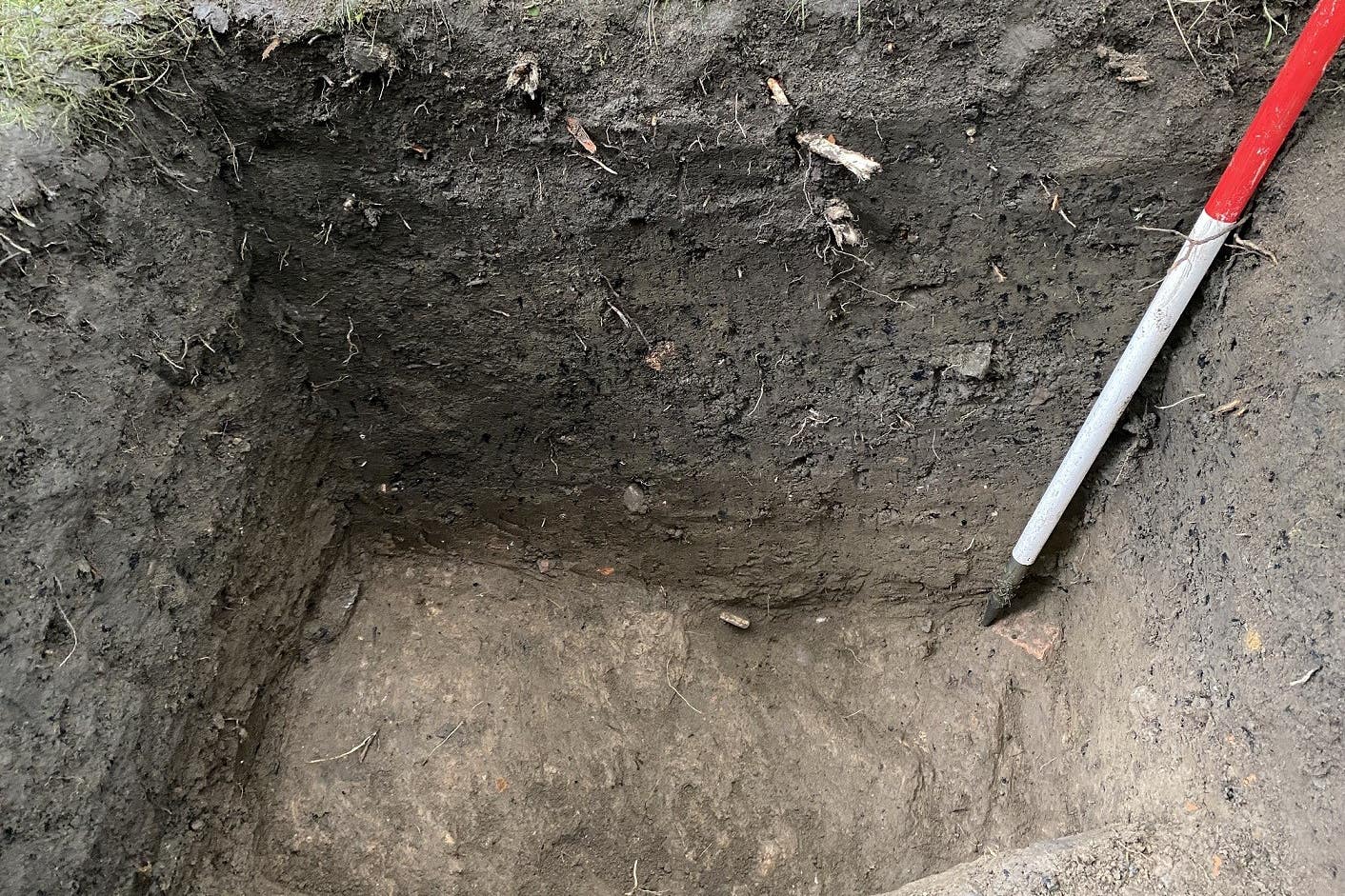Ancient Roman road used by key historical figures discovered in cottage garden
The road dates back almost 2,000 years and the cottage’s residents had no idea it was there until approached by an archaeologist who organised a dig.

An ancient Roman Road said to be used by key historical figures including William the Conqueror, Oliver Cromwell and every King and Queen of Scotland, has been found in a garden near Stirling.
Dating back almost 2,000 years, the cobbled road was built by the Roman armies of general Julius Agricola in the first century and would have connected to a ford through the River Forth.
Many of the key historical figures of Scottish and wider British history would have used the road for military campaigns given its strategic importance for crossing the Forth and reaching the Highlands, as well as its proximity to Stirling – Scotland’s former capital.
It’s amazing to think the likes of William the Conqueror and King Henry VIII had walked through where our garden is now – not many people can say that
It was uncovered during an exploratory dig in the garden of the Old Inn Cottage, next to the 18th century Old Drip Bridge, a few miles west of Stirling city centre.
The cottage is a former drovers inn built in the 17th century, and resident Jennifer Ure had no inkling the ancient road was buried in her garden until approached by Stirling Council archaeologist, Murray Cook, who believed the route may go through there and arranged the dig.
He said: “This crossing would have been used by the Romans, the Picts, William the Conqueror, Oliver Cromwell and every King and Queen of Scotland, including MacBeth, Kenneth McAlpin and Robert the Bruce – but not Bonnie Prince Charlie who we know crossed the river at a ford at Frew to the west of Stirling.
“It is the most important road in Scottish history so it’s an amazing discovery.
“To literally walk where Wallace and Bruce went, let alone the Romans, Picts and Vikings is astonishing. It has also never been clear before this find where this road ran.
“To the south the road heads towards Falkirk and would eventually take you to England. To the north, it would take you a crossing over the Tay and the edge of the Roman Empire.”
Mrs Ure, who lives in the cottage with her family, said: “It’s amazing to think the likes of William the Conqueror and King Henry VIII had walked through where our garden is now – not many people can say that.
“I’m lived in Stirling most of my life, and you know about all the great historical places in the area like Stirling Castle and the Wallace Monument, but I don’t think people appreciate all the other historical events that took place here which this discovery is bringing to light.
“I had no idea that the road could have been there until Murray turned up and asked about doing the dig in the garden. When the road was found, I couldn’t help but feel excited especially given its significance.”
Mr Cook led the training dig which involving local volunteers and students.
He said the road was not maintained after the Romans left so what was uncovered is the eroded road surface.
He said: “We know that a ford has been recorded here since 1304 when the area was being monitored by Edward I’s spies during the siege of Stirling Castle, when he used the War Wolf, the world’s largest trebuchet.
“Before the ford here was built, it was likely that the ford at Cambuskenneth was used which is the only place on the Forth that you can cross dry shod.
“The ford is last recorded in the 18th century when it was replaced first by a ferry and then by a bridge. But all of these are in the same location as it’s more expensive to move the road.”
Subscribe to Independent Premium to bookmark this article
Want to bookmark your favourite articles and stories to read or reference later? Start your Independent Premium subscription today.
